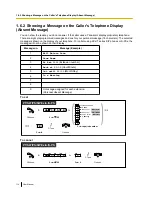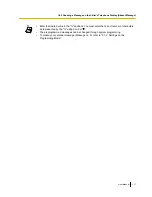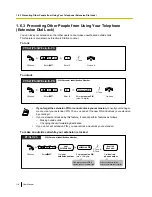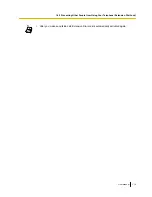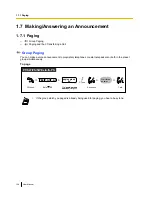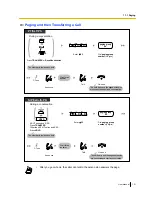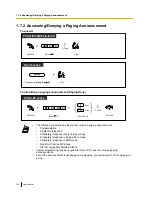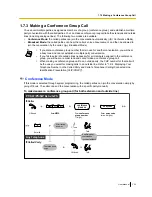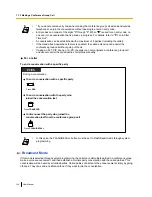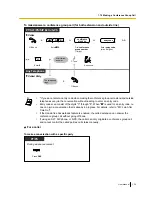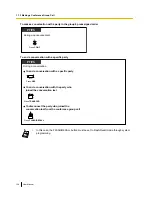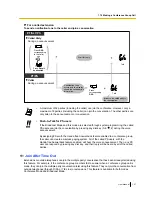
1.8 Using the Unified Messaging Features
1.8.1 What is the Unified Messaging system?
Introduction to the Unified Messaging system
Your PBX can provide you with Unified Messaging system service. You or an outside party can access the
Unified Messaging system from a telephone. As the owner of a mailbox, you can:
•
Send a message to one or more people inside or outside your office.
•
Receive and print fax messages.
•
Transfer messages to other subscribers and add your own comments.
•
Access your mailbox and listen to your messages, even when out of the office.
•
Have the Unified Messaging system call or e-mail you when someone leaves you a message.
•
Be notified by the message waiting lamp on your extension when new messages have been recorded in
your mailbox.
•
Screen your calls.
•
Create a set of options and functions exclusive to your mailbox (Personal Custom Service) that can be
selected by your callers.
•
Voice, fax, and e-mail messages can be managed in a single inbox using the Communication Assistant
plug-in for Microsoft
®
Outlook
®
.
•
Voice, fax, and e-mail messages can be managed via an e-mail client that supports IMAP4.
•
Many other useful messaging features.
•
PBX users who are assigned a mailbox in the Unified Messaging system are called
subscribers.
•
Hospitality Mode:
If your service mode is set to "Hospitality Mode", available features such as listening to
messages, personal greetings, etc. may be limited according to the COS settings for your
mailbox.
Before You Begin
In order to use the Unified Messaging system as a subscriber, you need to know the following information. The
System Manager can help you if you do not know this information.
•
The extension number that you should dial in order to access the Unified Messaging system.
•
Your mailbox number and extension number (In many cases these are the same number, but it is possible
they are not).
•
Your mailbox password (if set).
•
The System Manager’s telephone number. The System Manager is the person you should refer to when
you have any problems with the Unified Messaging system.
Using the Unified Messaging system
There are two ways to use the Unified Messaging system; you can be either a subscriber, or a caller.
Each subscriber has his or her own mailbox. Subscribers can play back voice messages and fax message
envelopes, print fax messages, leave messages for other subscribers, record a message that is then sent to
multiple parties (including outside parties), record greeting messages, etc. In order to use the Unified
Messaging system as a subscriber, you must first "log in" to your mailbox. This usually involves dialling your
mailbox number and entering your password. Once you have logged in, you can use "Subscriber Services";
Subscriber Services are all the features and functions you can access or perform as a subscriber.
A caller can generally be thought of as an outside party. Callers can leave messages for subscribers or use
the Unified Messaging system to be connected to specific extensions, but they do not log in to the system
before using these features, and the number of features they can use is limited.
130
User Manual
1.8.1 What is the Unified Messaging system?
Содержание KX-NS1000
Страница 12: ...12 User Manual Table of Contents...
Страница 244: ...Table 1 Standard mode for RU model 244 User Manual 1 14 2 Using the Directories...
Страница 245: ...Table 2 Option mode User Manual 245 1 14 2 Using the Directories...
Страница 246: ...Table 2 Option mode for CE model 246 User Manual 1 14 2 Using the Directories...
Страница 247: ...Table 2 Option mode for GR model User Manual 247 1 14 2 Using the Directories...
Страница 248: ...Table 2 Option mode for RU model 248 User Manual 1 14 2 Using the Directories...
Страница 256: ...256 User Manual 1 15 1 Cellular Phone Features...
Страница 372: ...372 User Manual 5 5 1 PCMPR Software File Version 002 0xxxx...
Страница 373: ...Index User Manual 373...
Страница 381: ...User Manual 381 Notes...

